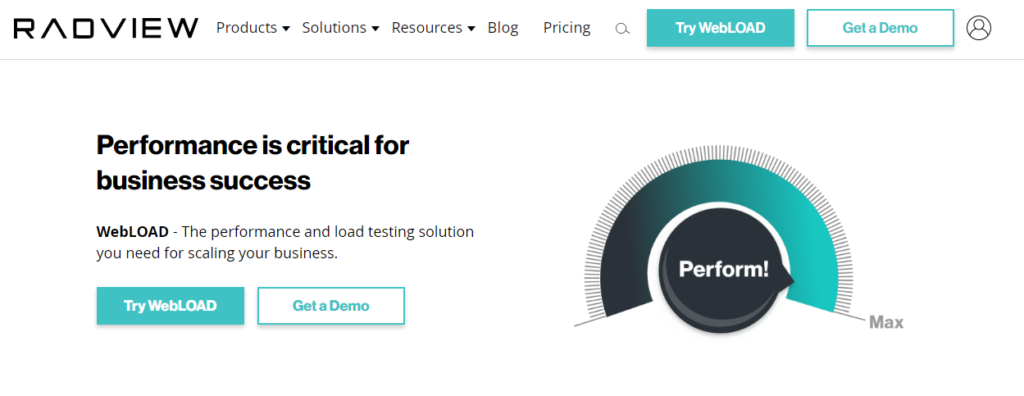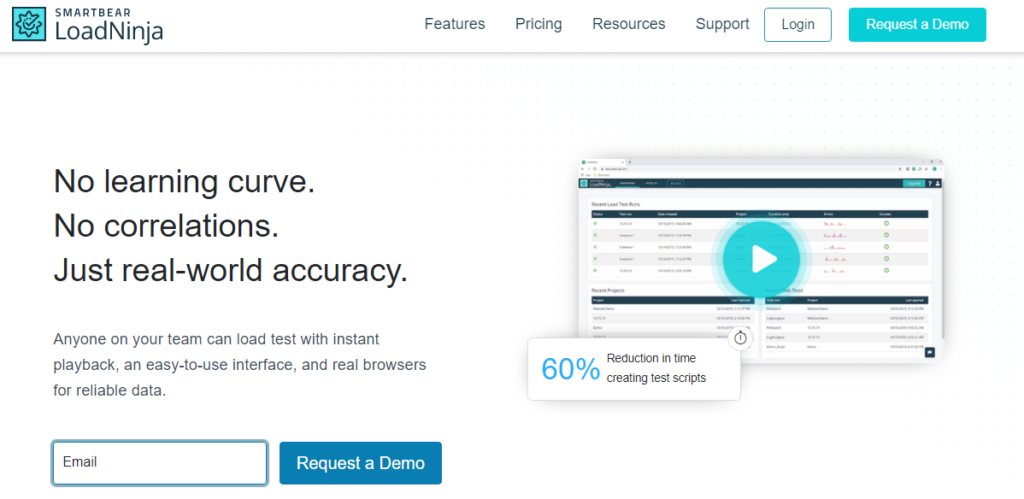
Last updated on April 7th, 2024 at 09:06 am
Introduction to Performance Testing
Performance testing can assist with the development of an application by ensuring that the finished product is going to work effectively and efficiently. These types of tests are used to identify bottlenecks and find ways in which the software can run quicker or more smoothly. There are a variety of performance tests.
We will discuss them later because each one serves a different purpose to ensure that there are no fluke problems before the launch.
Even though testing an application is a vital stage for making sure it will function properly, many associations still tend to overlook examination phases or simply perform them after functional testing has been completed.
Furthermore, performance testing has multiple objectives. The first is analyzing application output, then processing speed, data transfer velocity, and checking on the network bandwidth consumption.
It’s important to test for the potential of maximum concurrent users, memory use, and workload efficiency for your project since that will help determine if it will work effectively or not.
Performance Testing: The Types
There are a variety of performance tests, as mentioned above. These include load testing, stress testing, endurance testing, spike testing, scalability testing, and at last volume testing. Here’s a quick read about each of them –
- Load Testing: Performance bottlenecks slow down how data moves through the network and they can prevent anything suffering from other applications or websites.
To make sure an application is going to be able to handle a large amount of traffic, it has to go through load testing.
- Stress Testing: It checks how an application responds when it is placed under extreme stress while running through demanding tasks.
With this data, the testing engineers can figure out what parts of the system are at risk of breaking down and will require fixing or other modifications for better performance in the future. - Endurance Testing: Endurance testing serves to ensure that an application or program can withstand an anticipated amount of work and/or processing.
- Spike Testing: This test helps to examine the program/application’s response to the heavy user-generated load.
- Scalability Testing: The primary and only goal of scalability testing is to ensure that a program could scale up as per the increased user load.
- Volume Testing: Last on the list, volume testing helps to learn about how a program/software will behave when it will contact a database with varied sizes.
Why is it Important?
Performance testing is a process used to analyze the performance, stability, and scalability of applications/platforms. In short, it helps ensure predictable response times of a software product and ensures that they are consistent in all environments.
Now, because performance testing can be done using database load or web stress tools, you can carry out this test before your clients start complaining about slowness when multiple people use your site at the same time and before inconsistencies emerge due to operating systems.
Precisely, performance testing is really important.
If you’re releasing a product to the market, you can’t afford for it to be released with bad performance metrics. Your customers won’t like it if the product is too slow or has unexpected errors. So be sure there are no surprises when your software launches tomorrow.
The Top 3 Performance Testing Software
The following are the three (3) best performance testing software, ranked –
1. TestGrid

Automating performance testing with TestGrid is a great way to ensure that the testing process isn’t a logistical nightmare. If you have been using manual testing so far, simply getting rid of it and switching over to this software will make a world of difference concerning the time saved during QA, and the overall satisfaction of your customers.
Precisely, when it comes to testing automation, TestGrid is one of the best tool at your disposal. While a process involving manual testing can be difficult to manage when managing multiple projects, a tool like TestGrid can go a long way towards making it much easier and help you better keep track of everything if used alongside other similar solutions.
Here are some of the reasons why TestGrid’s automated performance testing tool should be your one-stop solution –
- It is more effective than manual testing: TestGrid makes performance testing a less time-consuming process that is effortless and reliable from the economic and quality POV.
- Good ROI: You might have to shell out quite a bit of capital initially if you want to automate your testing process, but the long-term benefit is that it will translate into saving you money and allowing you to test more efficiently.
- Provides excellent test results: With TestGrid at your service, you can eliminate a whole lot of hassle. Now run more complex/extended tests without the need to manually attend each test run. You’ll be able to test for a longer period and have better coverage so you can get top-notch software quality with TestGrid.
- Higher quality and precision: Manual testing may be monotonous and time-consuming, but testing with TestGrid’s automated performance testing tool is much more accurate and fun than manual testing. The program runs the test again and again with the same precision every time, so you never have to worry about human error when trying to learn from your product’s tendencies and pains.
Pros
- Provides constant and early feedback.
- Helps improve the software in real-time while developing the software.
- Analyzes the mistakes real quick and help the user rectify them effortlessly.
- Provides the unit testing feature.
- Allows the user to plan and assign the respective resources for better performance testing.
- Provides an advantageous and realistic testing environment.
2. WebLOAD

With the help of the WebLOAD performance testing tool, you can put a constant load on an application and determine if it will be usable.
This is especially helpful when you’ve created an application/platform to be used by thousands at the same time or even more than that. It not only takes care of all of the logging, but it also comes with technologies that continually monitor your project as it runs in stressful environments.
Remember that performance issues are much easier to find in a load test than after you have deployed to users. It also has interfaces with a lot of other programs that are out there that let you see if your device is slowing down underuse or if the company is getting indications from those users reporting errors on their phone.
Moreover, WebLOAD integrates with Jenkins, Selenium, and others to ensure continuous load testing for the DevOps.
Pros
- Offers both on-premise and cloud-based solutions.
- Compatible and extensible with pretty much every web technology.
- Catalyzes a manageable test environment.
- Parameterization, native JavaScript, and minimal correlation as per smart scripting.
- Detects the bottlenecks automatically.
3. LoadNinja

LoadNinja provides a faster and better way to do load testing. It uses real browsers instead of emulators. This software is here on the list because you can truly replicate site performance during peak traffic hours.
Whether you’re running an eCommerce site or an online gaming platform, LoadNinja makes sure that your site will be up when it matters most. Also with detailed reports, it’s easy to spot bottlenecks if there were any and make tweaks accordingly.
This tool is used to help you deal with the issues of real-time debugging, recording client-side interactions, and much more. It automates the tedious activities that are involved in translating scripts, dynamic correlations, and cleaning scripts.
It helps you focus on building apps rather than writing scripts. Moreover, it supports HTTPS, HTTP, Java, SAP GUI, WebSockets, and Oracle Forms.
Pros
- It provides load testing at scale for browsers.
- Enables a feature where the user can create a load test and edit the components that do not require any scripting.
- It provides real-time management of virtual users.
- Provides in-depth metrics and analytics.
- There is no cloud-based hosting.
Conclusion
Let’s recall what exactly performance testing is. First of all, it’s a process by which you can ensure that you’re providing your customers with high-quality products.
Achieving this means that there needs to be some sort of baseline set for the testing process to achieve the goals we mentioned earlier. Also, it should be noted – performance management system is probably one of the most important aspects when it comes down to pre-marketing.
One way or another – going forward with automated performance testing tools and software could make your job a lot easier. And when it comes to automation, there are not many solutions you should turn to before looking at TestGrid.
While manual testing can be effective in some instances, a solution like TestGrid can help make things easier and free up your time as well as resources so that you’ll have more time to complete and manage multiple projects.

Akanksha Dalmia is a content writer and marketer who has formerly worked out with several software testing companies and have tremendous knowledge about automation testing tools and software. A writer by day and a software enthusiast by night, she loathes to discuss himself in the third person but can be persuaded to do so from time to time.

